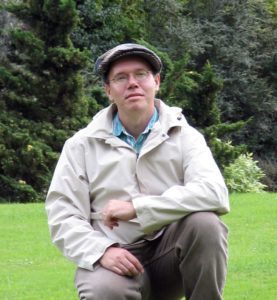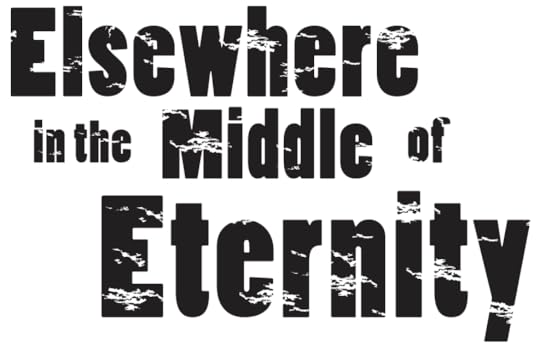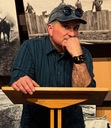Stuart Roth Brings Elementals and Clones to the Middle of Eternity
Our Kickstarter campaign to bring you volume two of our Middle of Eternity anthology series has managed to raise approximately $1,348. However, we have only 8 days left to raise the remaining $1,152 to meet our goal. Otherwise, the project will not be funded at all. If you’re considering whether to back our project, please click here to check out the various donation levels and the rewards we’re offering on Kickstarter. We deeply appreciate your support!
Up next in our author interview series for the upcoming release of Elsewhere in the Middle of Eternity is returning author Stuart S. Roth.
Stuart is a pragmatic optimist with a pessimistic streak living in the Northeastern United States. Happily married and settled, he now cranks out periodic short stories and is finalizing a novel for publication.
Having been a lifelong amateur writer, Stuart currently toils in the real-world occupation of finance and accounting. This career unwittingly gave a jump-start to his creative avocation by allowing him to travel the world as an auditor. Over a two-year period he visited 14 countries and got to experience a much larger world. Some Indiana Jones like exploits included: concussing himself on a beam moments before introducing himself to the local management team; conducting an IT Audit in Morocco without speaking Arabic — to a staff who didn’t speak English! — and presiding over an assignment in Vietnam while suffering from dehydration and the effects of malaria pills. To this day he cannot watch Apocalypse Now without having flashbacks to Nam: “The heat, the humidity… the horrible accounting”.
Returning for another intrepid jaunt across the Middle of Eternity, you bring us two amazing stories with “The Willow Tree” and “The Mule.” Please tell us what inspired each of these tales.
First off, I would like to thank you and Firebringer Press for inviting me back for the second volume. I really enjoyed the first collaboration and look forward to seeing the results from this effort.
The setting and characters of “The Willow Tree” were inspired by time I spent in Louisiana and a bit from the late Harper Lee’s novel “To Kill a Mockingbird”. Louisiana has a different flavor than the Northeastern US where I have lived most of my life. The plot came about when I read about weeping willow trees and how their roots get into everything from ponds and streams to septic tanks and plumbing. Willow trees with their waving branches create a dreamy, ethereal world beneath their shadow. What better to live in such a world than a kappa from Japanese folklore. Kappa’s are water spirits. Parents warn their young children not to play in streams and ponds unattended or the kappa will get them. It is a coming of age story where childhood is filled with the joys of day, but the shadow of fears.
“The Mule” is a timely story in regards to the current migrant crisis facing Europe, but it was written well before the Syrian crisis. Europe in recent times has espoused certain values, condemning or putting down other countries for what they consider failures in liberalistic values, but in reality, their own actions have not met with the high standards they claim to have for themselves. “The Mule” concerns a woman who is the daughter of “The Two Hundred”, two hundred clones provided to infertile couples by an geneticist. The children of the clones were all said to be sterile, but one woman has given birth to a son. The story is about her struggle to save his life in a less than caring European Union.
You completed a brilliant science fiction novel called Myomria that is currently in submission to a publisher. As one of your beta readers, I am still in awe of the story’s originality. Without giving too much away, what can you tell us about the world of Myomria?
Thank you for the compliment. “Myomria” and its potential sequel “Oubliette” will, if they make it to print, be my reason for being (at least in writing matters). Myomria is a world of changing realities, where people can conspire to change the past simply by thinking or re-weaving it. The consequence of this is that reality itself becomes unstable. The leaders of this world know that chaos is coming. They need a new reality and a new writer of fiction to return the world to stability. Into this world are introduced men and women from earth. They come from a timeline where Napoleon was never defeated and where his heirs have gone on to conquer space. But when reality can be re-woven by the will of the powerful, who can tell what is real and what isn’t any longer.
Where else have you been published and what new projects are you working on?
A sequel to “The Willow Tree” has made it to audio in the Cattail Country Store series created by Steve Wilson. It is called “Spanish Moss” and deals with the aftermath of events in “The Willow Tree”. Spanish moss is even more iconic in the south than weeping willows. The story deals with a legend involving Carmelite nuns who died during the French Revolution and an old box that has been sitting in a Louisiana church. Steve’s audio really brings out the ghostly tones I was hoping to capture in the story.
I have recently had a story called “Circular Logic” accepted in an anthology being published by Pseudoscope Press. “Time Shadows: Into the Abyss” is a Doctor Who anthology being produced for charity. It is due to debut sometime in April in the UK, Canada and US and will raise money for prosthetics research. It has been an exciting project because it allowed me to delve into established science fiction characters and color in someone else’s coloring book. The challenge is to tell a new story, but keep the characters and situations true to the original creators’ vision of them.
What does Stuart Roth do when he isn’t writing?
Part of writing is to spend a lot of time reading. I have found the joys of my local library and have been reading as much as I can on a variety of topics. It is important to read a large variety of things. It gives you knowledge of subjects that help populate the worlds you build in your writing. For example, I personally may not be interested in sumo wrestling, but one of my stories features a man whose whole life is driven by the sport. In order to tell such a story, I need to research sumo and take an interest in it. That’s why reading is so important to writing.
As for the rest of my life, currently, I am experiencing the pleasures and pains of life as a finance analyst for a national company. I am married to my beautiful wife, Maria, and we live in the northeastern US, where, as of this writing, we have finally seen the last of the 27 inches of snow that fell a couple of weeks ago.




